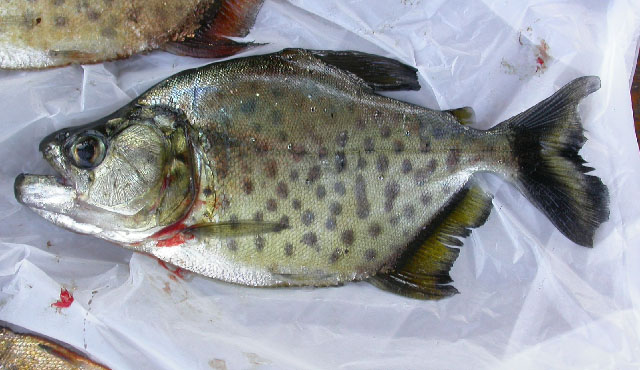| Serrasalmidae (Piranhas and pacus), subfamily: Serrasalminae |
| 27.1 cm TL (male/unsexed); 32.4 cm TL (female); max.weight: 440.0 g; max.weight: 783.0 g |
|
benthopelagic; freshwater |
| South America: Paraguay-Paraná River basin. |
|
|
| Feeds mainly during the daytime, though some large fish (15-20 cm SL) extend their foraging activity to dusk (about 1800-1900H). Night is spent sheltered among vegetation. Small-sized to medium-sized fish (7-10 cm) are solitary and patrol feeding territories (3-4 square m.) in a way similar to that reported for the scale-eating Catoprion mento. Stalking with some use of plant cover is a frequent mode of hunting employed by S. marginatus. It approaches its prey with a slow, stealthy movement from behind or below. It strikes its prey on the tail or anal fin, of which a piece is clipped out with a jerking motion of the body. This clipping is audible underwater. Lurking is also employed during daytime (Ref. 9080). |
|
Not Evaluated (N.E.) Ref. (130435)
|
| harmless |
Source and more info: www.fishbase.org. For personal, classroom, and other internal use only. Not for publication.

